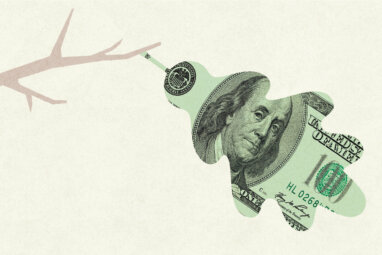New Ways to Engage Employees, Suppliers and Competitors in CSR
Timberland LLC, a global boot and outdoor apparel manufacturer, goes beyond simply telling the world about its sustainability work. According to Betsy Blaisdell, the company’s senior manager of environmental stewardship, it has creative new ways to involve employees and to partner with suppliers — and competitors.
Topics
Leading Sustainable Organizations

Betsy Blaisdell, senior manager of environmental stewardship at Timberland
Betsy Blaisdell is senior manager of environmental stewardship for Timberland LLC. She’s been in this role for seven years and has nine years at Timberland.
Blaisdell has spent her Timberland career working in sustainability issues, helping to usher the company to a powerhouse role in corporate social responsibility circles. Many respondents to MIT Sloan Management Review’s second annual Sustainability & Innovation Global Executive Study in 2010 cited Timberland as being world-class at addressing the issue, and the company has won awards from Business Ethics, National Wildlife Federation, Ceres, and Points of Light, among others.
Timberland has been manufacturing foot apparel since 1955, when it began as the Abington Shoe Company. It became The Timberland Company in 1978. In 2011, the company was acquired by VF Corporation, a $9.5 billion apparel and footwear conglomerate based in Greensboro, North Carolina, whose 35 brands include jeans companies Lee and Wrangler and outdoor apparel company North Face. Timberland’s 2011 revenue was $1.5 billion, and it employs 5,800 employees worldwide in the design, engineering and marketing of its premium goods.
Blaisdell has helped built a creative array of new initiatives designed to push sustainability issues as deep as possible. Her audience: consumers, employees, suppliers and even competitors.
“CSR reporting is rapidly evolving,” she says. Timberland supplements its annual reports with ongoing, interactive updates, which provide detailed information on how the company is tracking and where it could be doing better.
In a conversation with MIT SMR’s managing editor and special projects manager Nina Kruschwitz, Blaisdell talks about the company’s “Voices of Challenge” website area, the environment “nutrition label” it’s developed for its footwear, and its partnership with 60 plus apparel and footwear brands, retailers, suppliers and NGOs (from Adidas to Patagonia to DuPont to the World Resources Institute) to develop a an environmental index called the Higg Index.
What’s the company’s history of establishing metrics and using them? I seem to remember that you were doing something with the advocacy group Ceres back in the ‘90s. [There’s some history here (PDF).]
We started CSR reporting in the ’90s with a Ceres report. This was before the GRI reporting protocol [Global Reporting Initiative], which we use now. Ceres was encouraging corporate accountability for social and environmental impacts.





Comments (2)
Jim Terrinoni
Monteie@uol.com.br